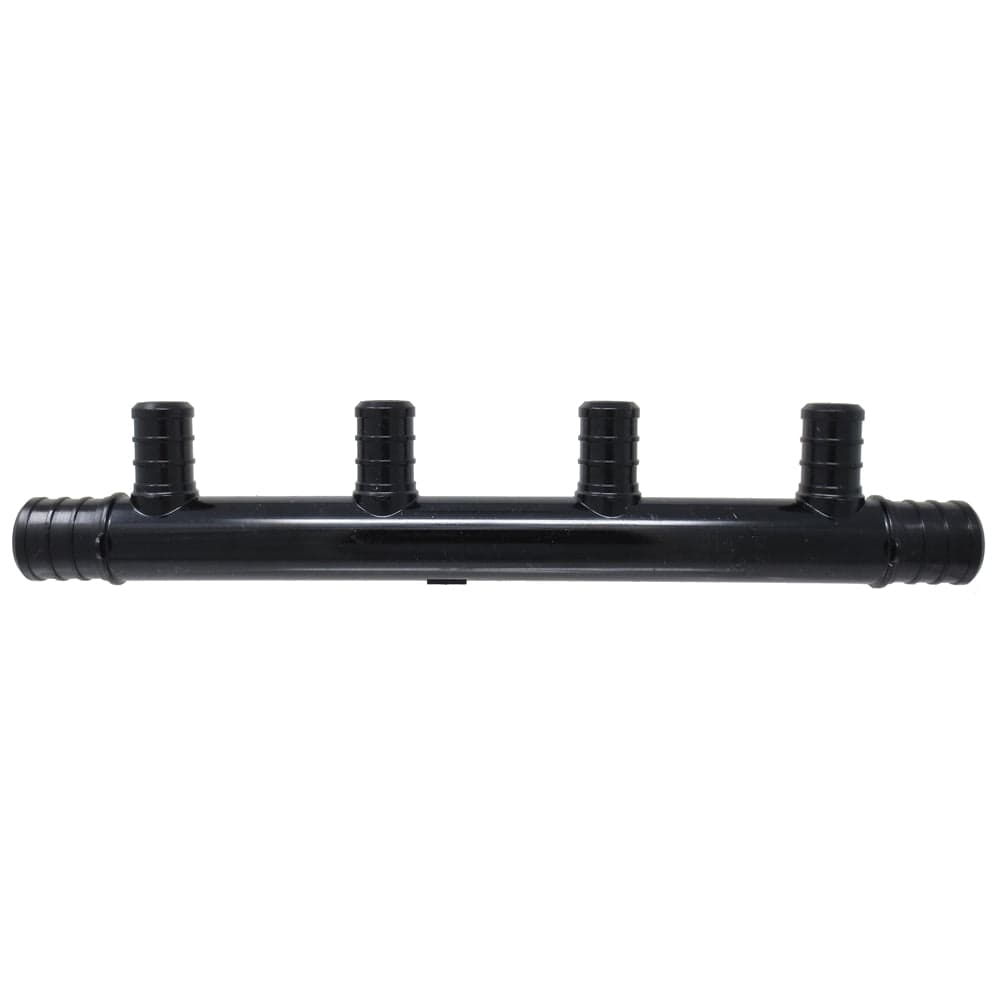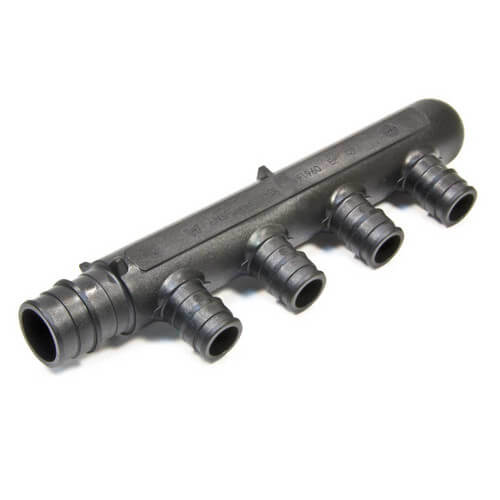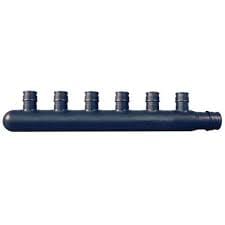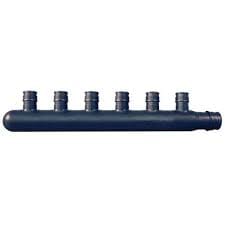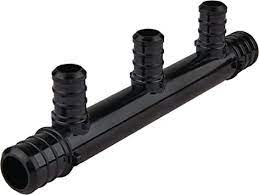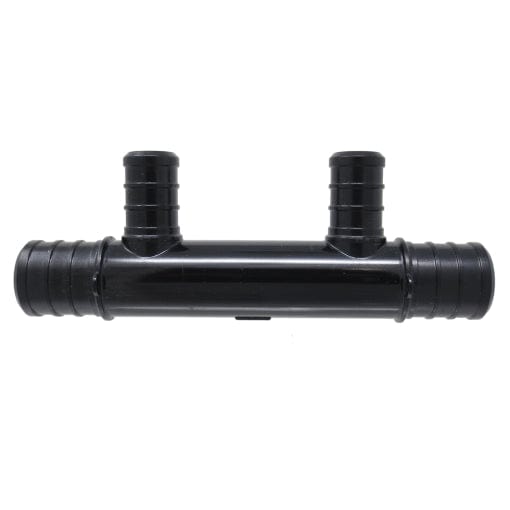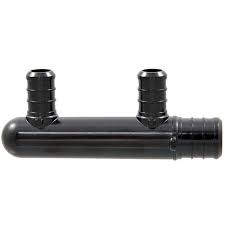About PEX Poly Manifold Headers
Poly manifold headers, also known as polyethylene manifold headers or poly manifold systems, are components used in plumbing and radiant heating systems. These systems are designed to distribute water or other fluids to various zones or circuits within a building for heating or cooling purposes.
These manifold headers are constructed from polyethylene (often referred to as poly) due to its durability, resistance to corrosion, and ability to handle varying temperatures and pressures. The manifold headers act as central distribution points where incoming water is divided and directed into separate circuits or zones.
Key components and features of poly manifold headers include:
Inlets and Outlets: They have multiple inlet ports to connect to the water supply and outlet ports that distribute water to different zones or circuits within the building.
Individual Shut-off Valves: Each outlet port on the manifold usually has an associated shut-off valve, allowing for individual control and adjustment of water flow to specific zones or circuits.
Temperature Gauges or Flow Meters: Some manifold systems may include temperature gauges or flow meters to monitor and regulate the flow of water to ensure optimal performance.
Compatibility with PEX Tubing: Poly manifold headers are commonly used with PEX (cross-linked polyethylene) tubing, as they complement each other in radiant heating systems.
Poly manifold headers provide a convenient and organized way to control the distribution of water within a building's heating or cooling system. They allow for efficient zoning and individualized control over different areas, ensuring comfortable temperatures while maximizing energy efficiency.
These systems are often used in radiant floor heating systems, where heated water circulates through tubing installed within the floors, providing even and comfortable heat distribution throughout the space. Additionally, they can be utilized in other hydronic heating or cooling systems where zoning and control of water flow are essential.



